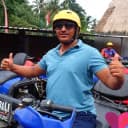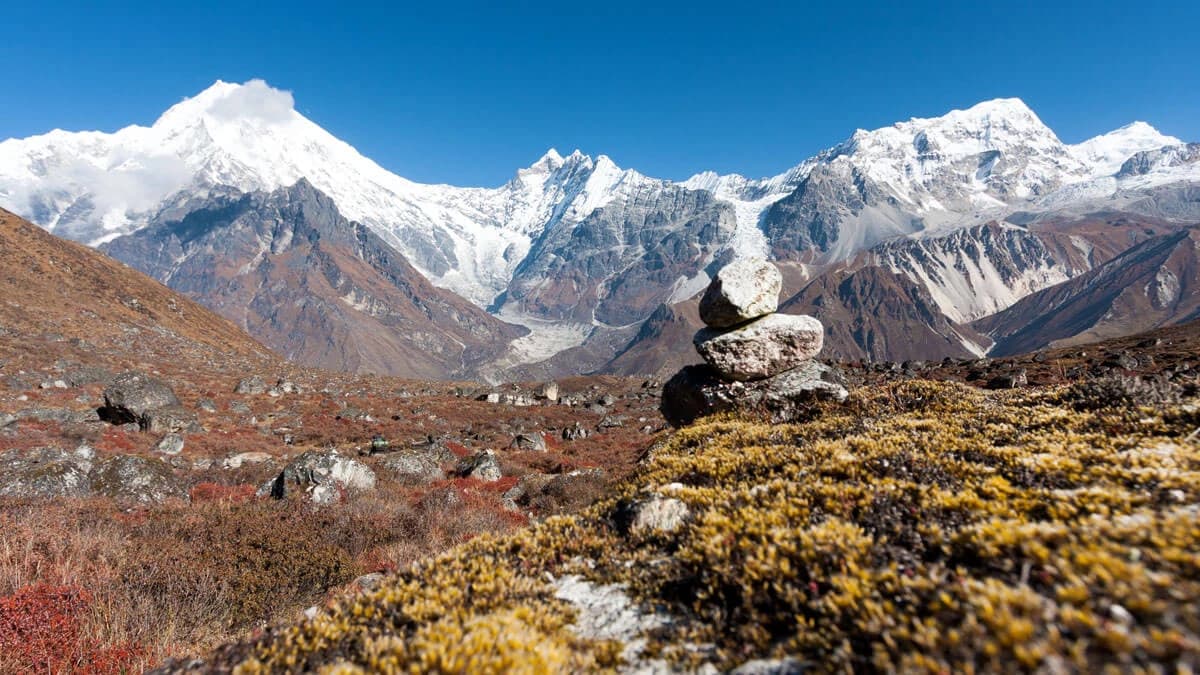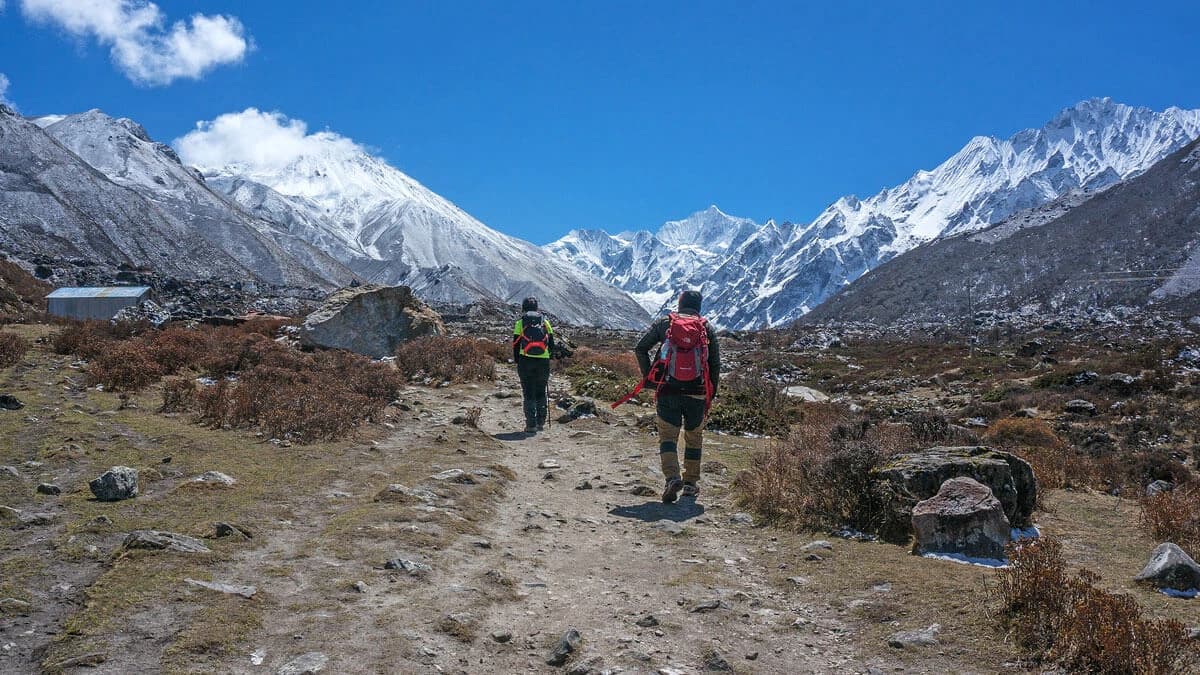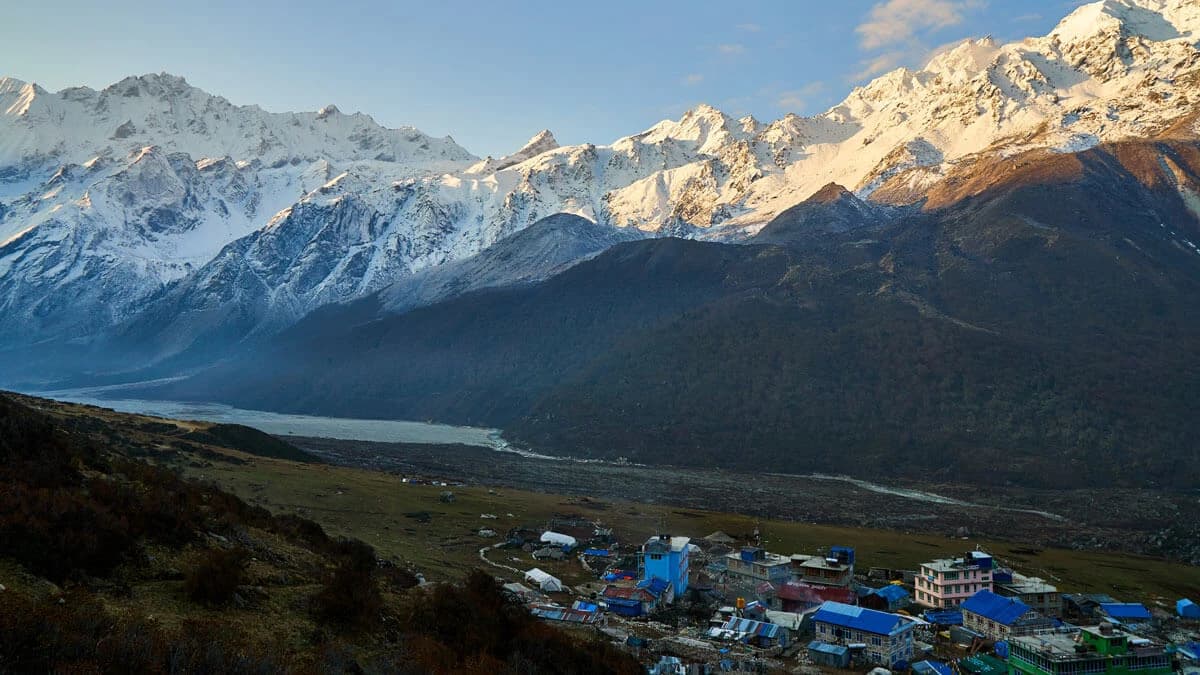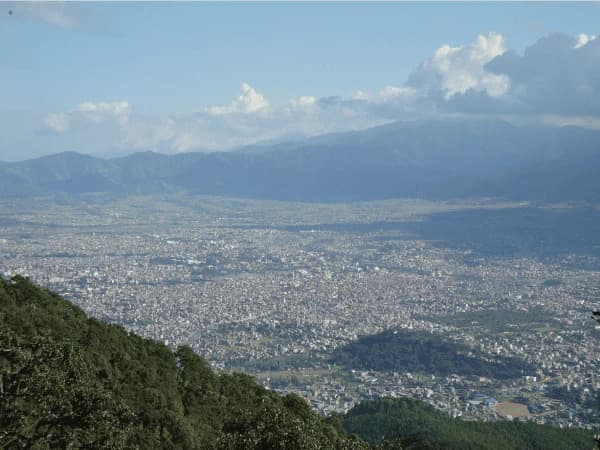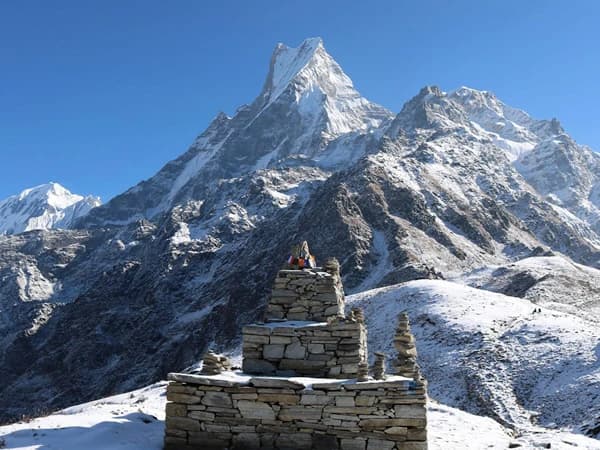The Langtang Valley Trek is a bonus for those who want to take a glimpse of the naked beauty of the mountains, but at the same time, not being a part of the tourist crowds that tend to infiltrate better-known trails such as Everest or the Annapurna. The journey will take over eleven days of stretching experience other than it is an easy walk in the mountains, but a deep engagement in the peaceful wilderness, rich cultural norms, and endangered local spirit of the Langtang region. The Langtang Valley is a place where trekkers can get a sense of remoteness, having just traveled a short distance north of Kathmandu.
Your journey starts with a beautiful ride between the restlessness streets of Kathmandu to Syabrubesi, a village on the foothills, starting the journey of this Himalayan journey. The highway itself is a prelude to the dramatic scenery that is to come, amid which is the windy highway that traverses among the green hillsides, terraces, and deep valleys. On the way, you can expect to quickly immerse yourself in a fascinating rhododendron, oak, and bamboo forest, which is a part of Langtang National Park. It is more than just a refuge to the trekkers as it is also home to a rich wildlife. The red panda can be sleuthily followed through the treetops, and one can even spot the langur swinging on the branches.
The higher you travel, the closer you get to the core of the Tamang culture with every village that you pass along the way. The town is surrounded by hills inhabited by the Tamang people, which were formed many centuries ago by people of Tibetan origin, and the lifestyle of the people has adapted to the surroundings. Passing by villages such as Lama Hotel, Langtang Village, and Mundu, you will witness wooden windows that are exquisitely carved, the spinning prayer wheels, and the colored prayer flags flapping in the wind, hoping to bring blessings along to the other side of the valley. The hospitality of the local people is one of the best sights of the trek. Evening hours of modest and yet very cosy teahouses also offer a chance to communicate with families, to exchange stories, and to take pleasure in nutritious local cuisine such as dal bhat, momos, and warm and fresh Tibetan bread.
The Langtang Valley is also rich in culture, and this is complemented by the spiritual heritage of the Langtang Valley. Kyangjin Gompa is the masterpiece of the trail, which is encircled by huge mountains and moving glaciers. This is an old Buddhist monastery that is a source of peaceful meditation and spiritual diggings to locals and trekkers. A lot of tourists opt to extend their stay here by an additional day, which they use as a darting point to short but satisfying excursions. It can be rewarded with one of the most panoramic views ever reached by a hike to Kyanjin Ri or Tserko Ri. The great villages of Yala Peak, Dorje Lakpa, and the mighty Langtang Lirung can be seen clearly in these locations, and their snow-covered encapsulations are brightened in the golden tone of nature at sunrise. Such are the occasions when you are on top of the clouds and in front of you is the great panorama of the Himalayas that impresses one so much that it creates a mark on the soul.
The other pleasant surprise in Kyangjin is a local cheese factory. This small facility was established many decades ago with the assistance of Switzerland, and it provides the rare kind of product called yak cheese, the kind of delicacy that describes the Langtang people in terms of resourcefulness and self-sufficiency. There is nothing as exotic as sampling fresh yak cheese with stunning landscape views of yaks grazing in the background of mountains. This experience will be etched in your mind long after you finish the trek.
The Langtang Valley Trek has much more to it than the beauty and culture; it is also a tale of resilience. This part of the world was marked by a devastating earthquake in 2015 when villages disappeared as a result of landslides. But the valley has come back to life thanks to the relentless nature of the local communities. Teahouses have been restored and trails have been reopened, and villagers are happy to see the trekkers back in their villages. By deciding to go trekking in Langtang, one would be making a direct contribution to this healing process and guarantee that children born in the far future will be able to live and prosper in this little spot of the earth in Nepal.
Though the hike is not particularly easy, it can be done by anyone who is willing to be a little adventurous and has a moderate degree of fitness. Day treks are an average of five to seven hours, which will provide enough time to catch sight of the scenery and adjust to the rising altitude. The gradual incline of the route makes it less exposed to altitude sickness than some of the more severe Himalayan ventures; therefore, it is a safer option for first-time high altitude trekkers.
After all, the Langtang Valley Trek is much more than simply a set of mountain passes, forests, and peaks. It is an experience in the secluded portions of the Himalayas where culture and nature are in total harmony. It is an opportunity to hike some ancient paths; to smell the pure mountain air; and to observe an ancient lifestyle, and in spite of modern world encroachment, it is still very much traditional. This is one of the most memorable treks that can be taken in Nepal, which provides a unique and enriching experience of the Himalaya, to only those adventurous souls who ever attempt to trek into the pathless valley.
Highlights
The 11 days Langtang Valley Trek is packed with incredible highlights that promise an unforgettable adventure in the heart of the Langtang region. Here are some of the top highlights:
- Scenic Drive from Kathmandu: The journey begins with a scenic drive from Kathmandu to Syabrubesi, offering stunning views of rural landscapes, terraced fields, and traditional Nepali villages along the way.
- Langtang National Park: Trekking through Langtang National Park, a UNESCO World Heritage Site, provides opportunities to encounter diverse flora and fauna, including rare Himalayan wildlife like red pandas, langurs, and colorful bird species.
- Tamang Culture and Heritage: Explore the rich cultural heritage of the Tamang ethnic community as you pass through their traditional villages. Interact with friendly locals, visit ancient monasteries, and learn about their unique customs and traditions.
- Kyangjin Gompa: Reach the sacred Buddhist monastery of Kyangjin Gompa, nestled amidst the stunning Langtang Valley. Explore the monastery, soak in breathtaking mountain views, and visit a local cheese factory to sample delicious yak cheese.
- Kyanjin Ri Viewpoint: Hike to the Kyanjin Ri viewpoint for panoramic vistas of snow-capped peaks, glaciers, and alpine landscapes. Capture stunning photographs and enjoy moments of serenity amidst the majestic Himalayas.
- Glacial Moraines and Alpine Landscapes: Trek through rugged terrain adorned with glacial moraines, lush forests, and alpine meadows, offering ever-changing scenery that will leave you in awe.
- Warm Hospitality: Stay in traditional teahouses along the trekking route and experience the genuine warmth and hospitality of the local people. Enjoy delicious Nepali cuisine and immerse yourself in the local way of life.
- Mountain Panoramas: Throughout the trek, marvel at breathtaking views of towering Himalayan peaks, including Langtang Lirung, Dorje Lakpa, Ganesh Himal, and more, creating an unforgettable backdrop to your adventure.
- Tranquil Environment: Escape the hustle and bustle of city life and immerse yourself in the tranquil Langtang Valley, where the only sounds you'll hear are the rustling of leaves, the chirping of birds, and the distant murmurs of mountain streams.
- Cultural Exchange: Engage in cultural exchange with fellow trekkers from around the world, sharing stories, experiences, and laughter along the trail, creating memories that will last a lifetime.

